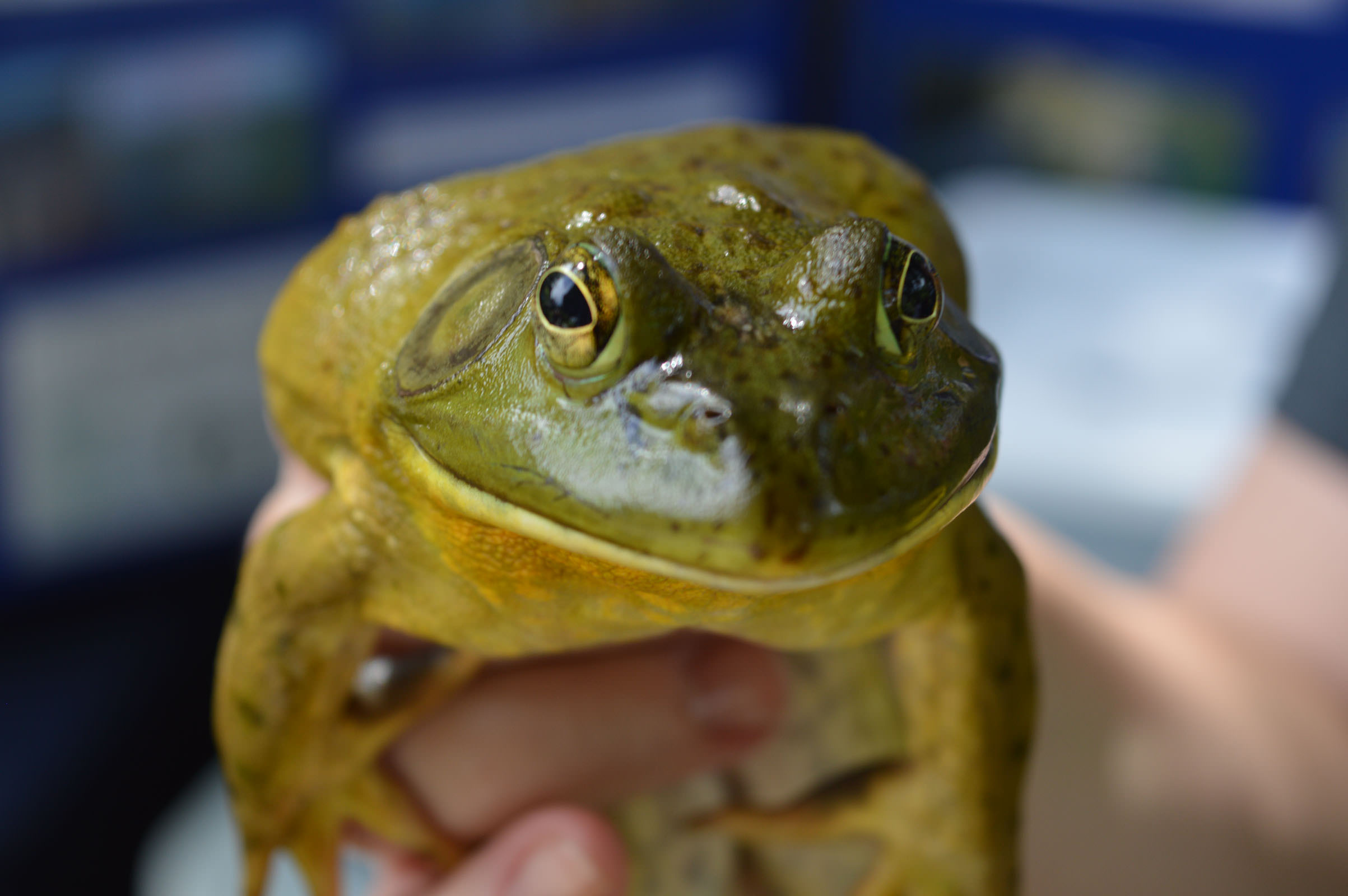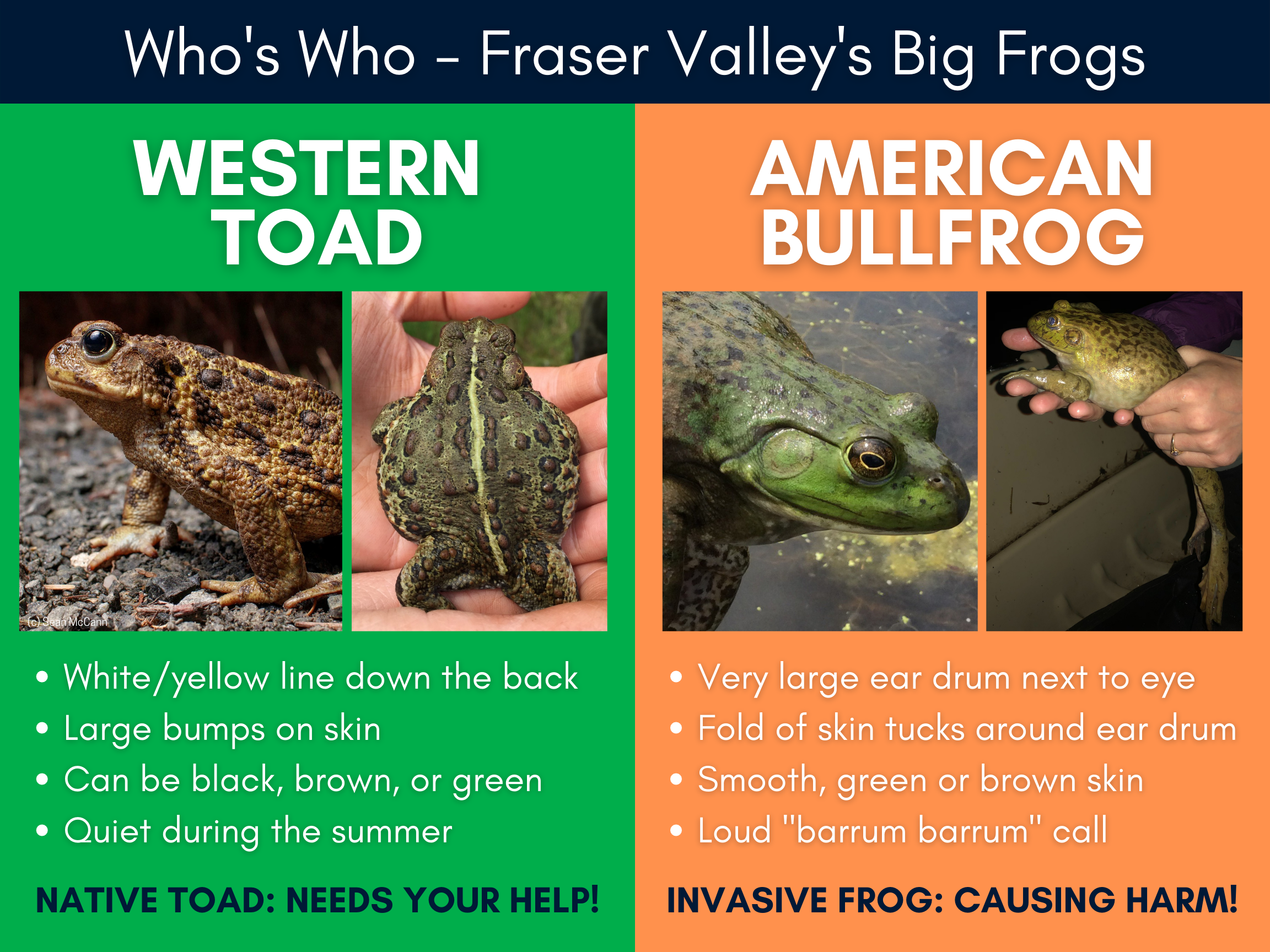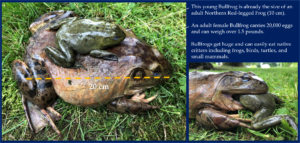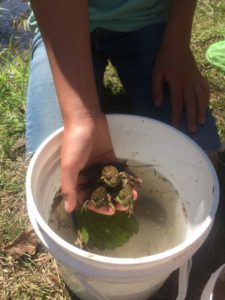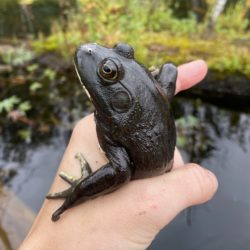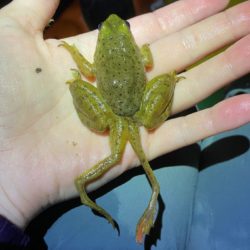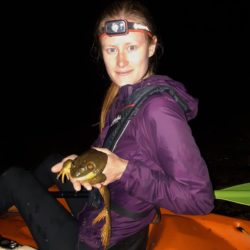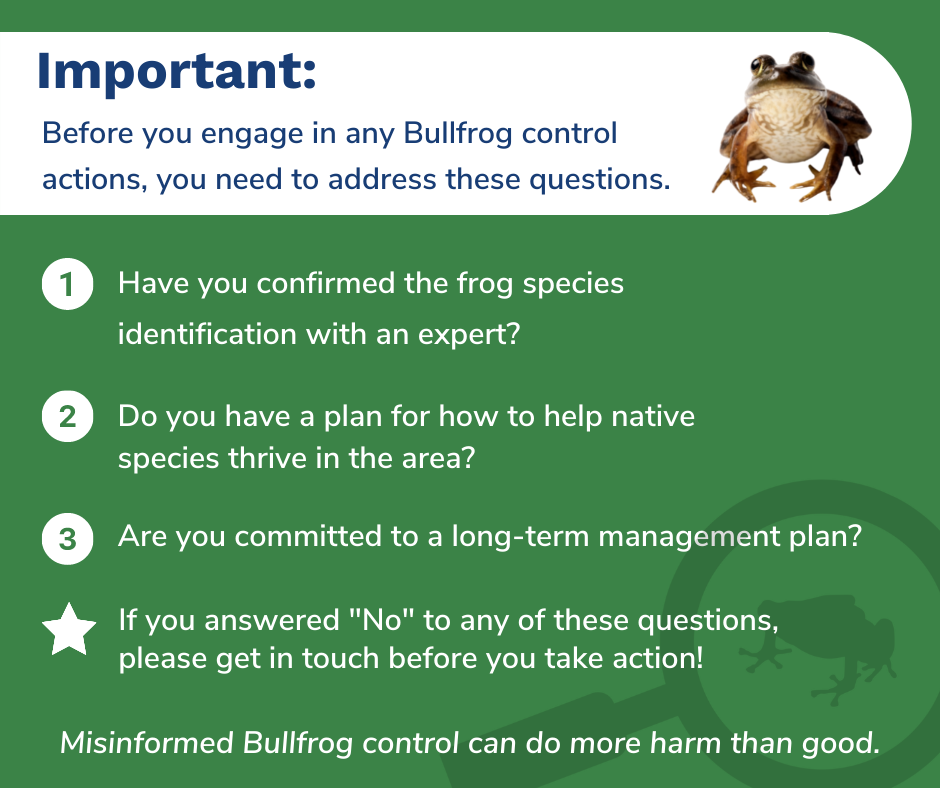What is the Bullfrogs and Biodiversity Program?
The Bullfrogs and Biodiveristy program works to protect local species and ecosystems at risk by learning about Bullfrog threats and how to address them. We engage in Bullfrog control in Chilliwack’s Ryder Lake neighbourhood to collect species-specific information and reduce predation. We do not promote the control of Bullfrogs without a comprehensive management plan in place.
We also distribute Bullfrog educational material across the Fraser Valley to prevent the spread of this invasive species.
